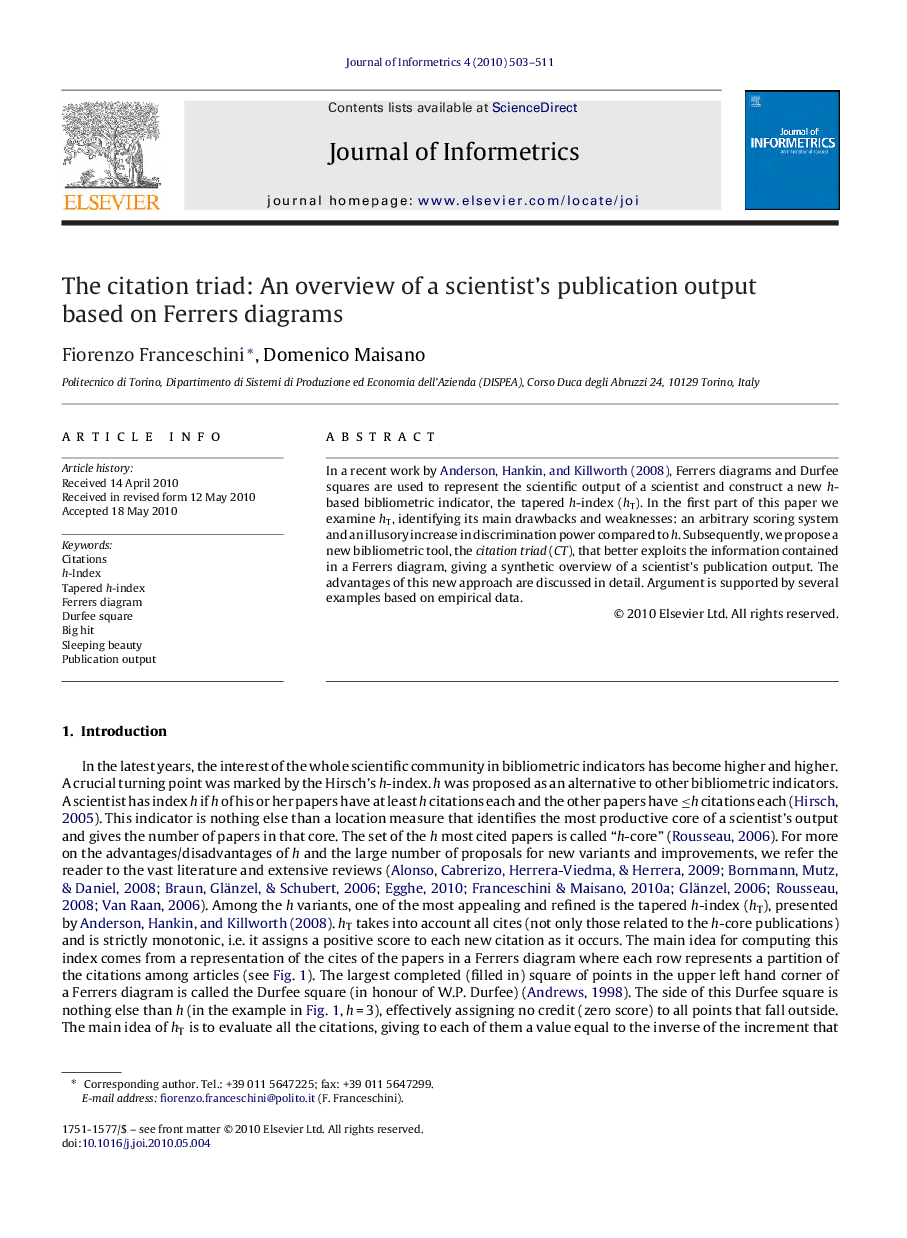| Article ID | Journal | Published Year | Pages | File Type |
|---|---|---|---|---|
| 523268 | Journal of Informetrics | 2010 | 9 Pages |
In a recent work by Anderson, Hankin, and Killworth (2008), Ferrers diagrams and Durfee squares are used to represent the scientific output of a scientist and construct a new h-based bibliometric indicator, the tapered h-index (hT). In the first part of this paper we examine hT, identifying its main drawbacks and weaknesses: an arbitrary scoring system and an illusory increase in discrimination power compared to h. Subsequently, we propose a new bibliometric tool, the citation triad (CT), that better exploits the information contained in a Ferrers diagram, giving a synthetic overview of a scientist's publication output. The advantages of this new approach are discussed in detail. Argument is supported by several examples based on empirical data.
